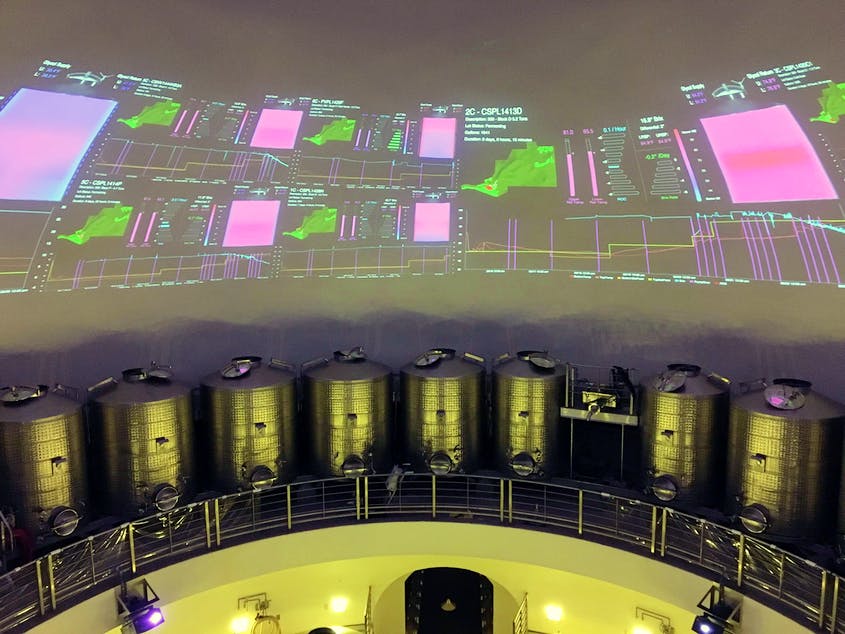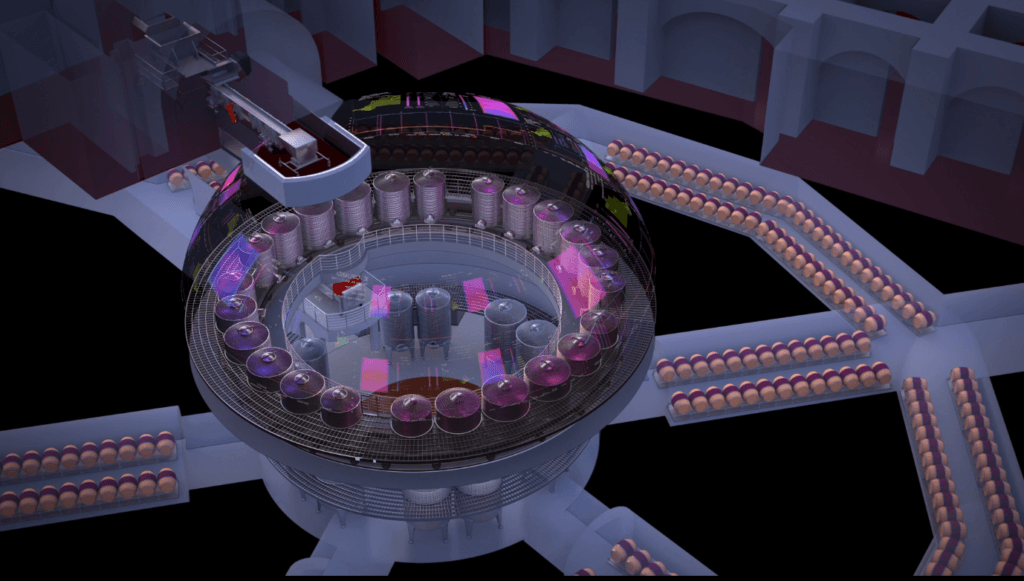Palmaz Vineyards: Can big data analytics disrupt the centuries-old wine industry?

Palmaz Vineyards is pursuing a modern digital strategy in an ancient analog industry. Will their data-driven approach to winemaking bear fruit?
Introduction
Artificial intelligence has emerged as a game-changing technological force disrupting industries ranging from retail to media to medicine. But can big data and complex algorithms transform winemaking, which not only has existed for over 8000 years but is also considered by most to be more art than science? The Palmaz family, who operate Napa Valley’s Palmaz Vineyards, certainly believe so. The family has spent the better part of a decade building a technologically sophisticated end-to-end wine making process incorporating advanced sensing technology and proprietary artificial intelligence systems to generate, process, and visualize billions of data points in order to – hopefully – produce a better bottle of wine.
Introduction to Palmaz Vineyards (Video Source)
“An aggressive approach to innovation”
Palmaz Vineyard’s unique approach to winemaking was apparent early on, when they designed the abnormal layout of their vineyard based on nearly 5,000 soil composition tests and then built the winery nearly 18 stories deep into the mountainside to enable gentle transportation of components with gravity instead of pumps. Today, their core differentiation lies in the technological infrastructure that they built in-house to augment nearly every aspect of the winemaking process.
VIGOR
Starting with grape growth, the Vineyard Infrared Growth Optical Recognition system combines data from bi-weekly fly overs of a plane boasting a multi-spectral infrared camera that detects plant chlorophyll levels with neutron probe soil testing that detects moisture levels. The AI system uses this data to not only detect burgeoning issues such as viruses but also to modulate watering algorithms and thereby standardize grape growth throughout the vineyard.
VIGOR Data Visualization (Image Source)
FILCS
Moving onto fermentation, the Fermentation Intelligence Logic Control System utilizes start-of-the-art thermographic sensors to monitor temperature and sono-densitometry tools to sense vibrations of fermenting wine in order to quantify the fermentation progression at a granular level. The AI system is then able to both notify winemakers of abnormalities as well as automatically adjust parameters to complete fermentation without human intervention.
FILCS Data Visualization on Fermentation Dome (Image Source)
Other
Beyond VIGOR and FILCS, the vineyard has implemented technology ranging from a rotating carousel of fermentation tanks (pictured below) to an RFID system that tracks user locations to mechanisms to visualize data in both apps and on the ceiling of the fermentation dome. Their newest innovation efforts are directed at using mass spectrometry to optimize barrel material composition and configurations.
Rotating Carousel of Fermentation Tanks (Image Source)
Value creation and capture
The early results from Palmaz Vineyard’s experimental approach to winemaking have been promising. The VIGOR system’s AI capabilities has enabled them to cut water usage by about 20% and align the ripening timeline for all grapes thereby improving fruit quality. The FILCS AI algorithm has continued to learn and improve such that it can now flag an upcoming issue approximately 30 hours in advance thereby allowing for proactive mitigations. Interestingly, the FILCs system proved its worth in 2017, when the family had to evacuate the vineyard due to wildfires and the smart fermentation tanks continued to automatically control the fermentation process and save about $10M worth of wine.
While the statistics above make clear that the use of big data analytics has enabled Palmaz to create value during the winemaking process, the question remains how much of the upfront technology investment is recouped during the wine selling process. Since the cheapest bottle of their flagship varietal – Cabernet Sauvignon – is $165 and many bottles are either sold out or exclusive, I speculate that they are doing just fine from a value capture perspective.
Challenges and opportunities
Art vs. science
The primary challenge faced by Palmaz is the fact that their data-driven approach goes against the traditional ethos of winemaking that is rooted in a very old-school, romantic, and artisanal style. While Palmaz claims that their winemakers still control all critical decisions in a traditional manner – just bolstered by a deeper set of underlying data – it’s unclear if their methodology can break through in the old-fashioned world of wine connoisseurs.
However, the unique approach also presents an opportunity to shatter expectations and garner significant media/PR buzz. Consider, for example, if they held a blind taste test pitting their AI-augmented wine against traditional powerhouse brands. Just as The Judgment of Paris in 1976 upended conventional wine wisdom when Californian wines defeated French incumbents in a blind tasting, such an event could have significant and long-term benefits for their strategy.
Consumer education
Another challenge is translating their tech-focused winemaking approach into sustainable consumer interest. Given the ubiquity of data analytics in modern society, I would hypothesize that there is a significant subset of customers who would jump at the opportunity to better understand how their wine preferences correlate to things like pH levels, barrel material, and weather conditions. Palmaz already incorporates some of these elements into their product websites, but could double down on this further by, for example, creating a consumer-facing app to close the data loop between wine making and wine tasting.
Example Product Page Data (Image Source)
Brand vs. technology
A final challenge/opportunity that Palmaz faces is how to position themselves moving forward. Their current approach focuses on using their technology and analytics only at their vineyard to produce wines sold under their brand. Since their true value proposition extends well beyond the brand itself and into the entire winemaking process, I recommend that they consider licensing their technology to other wineries through a “Wine-as-a-Service” business model to create and capture value across the industry versus at a single vineyard.
Conclusion
Palmaz Vineyard is pursuing a highly digital approach in an incredibly analog industry. While their early successes have demonstrated significant value savings internally during winemaking, it remains to be seen if their approach will translate into a sustainable product or service differentiation externally in the competitive wine market. I for one plan to sit back, pour myself a glass of (substantially cheaper) wine, and see how it all unfolds.
Sources
- Curry, Andrew. “Oldest Evidence of Winemaking Discovered at 8,000-Year-Old Village.” National Geographic. 13 November 2017. https://www.nationalgeographic.com/news/2017/11/oldest-winemaking-grapes-georgia-archaeology/#close.
- Godoy, Maria. “The Judgment of Paris: The Blind Taste Test That Decanted The Wine World.” NPR. 24 May 2016. https://www.npr.org/sections/thesalt/2016/05/24/479163882/the-judgment-of-paris-the-blind-taste-test-that-decanted-the-wine-world.
- Harpaz, Joe. “Big Data, Bigger Wines: High Tech Vineyard Reengineers The Magic of Winemaking.” Forbes. 30 September 2016. https://www.forbes.com/sites/joeharpaz/2016/09/30/big-data-bigger-wines-high-tech-vineyard-reengineers-the-magic-of-winemaking/#624a24491db7.
- O’Leary, Janice. “Napa’s Palmaz Vineyards Just Might Be the Most Hi-Tech Winery in the World.” Robb Report. 29 December 2018. https://robbreport.com/food-drink/wine/slideshow/napas-palmaz-vineyards-just-might-be-the-most-hi-tech-winery-in-the-world/.
- Palmaz Vineyards company website. Accessed 19 April 2020. https://palmazvineyards.com/
- Shoup, Mary Ellen. “There’s a place for socially responsible technology in winemaking, Palmaz Vineyards president says.” Beverage Daily. 23 August 2016. https://www.beveragedaily.com/Article/2016/08/22/There-s-a-place-for-socially-responsible-technology-in-winemaking.
- Slaughter, Sam. “The winery of the future looks like something Bruce Wayne would run.” Digital Trends. 17 September 2017. https://www.digitaltrends.com/cool-tech/palmaz-vineyards-future-of-wine/.
- Yu, Johnny. “Open source machine learning accelerates winemaking.” SearchStorage. 2 July 2019. https://searchstorage.techtarget.com/news/252466145/Open-source-machine-learning-accelerates-winemaking.







Great Post Matt. I liked especially your idea of “Wine-as-a-Service” to capture the value of the process improvement beyond the Brand value. Overall, I am a strong believer that art and technology can live together, so, as technology becomes cheaper, other vineyards can implement it. I think also the next step for them is to expand data analytics and AI to link customer preferences to the production process, maybe they can get customers feedback and introduce it in the production process so wines are more customized?
Great article! I especially like that the vineyard is not using AI to replace the necessary human touch but using AI to augment the process. As this is a product where taste and preference is so important, having an element of traditional winemaker’s making the final decision is important in integrating feedback from customers / wine connoisseurs. I am very curious to see how these wines do the in the market vs. traditional methods!
Hi Matt,
Interesting post.
Surely a lot of this innovation comes at a cost? Do you think the virus-identifying and water-modulating AI algorithms would provide a good return on investment for smaller wineries. Would it be worth them making the investment?
Given the transferability of some of the grape-growing process to other farming industries could you think of (or have you seen) other applications of these technologies in the agricultural space?
The technology used in this vineyard is fascinating! I’m interested in seeing how this Vineyard Infrared Growth Optical Recoginition technology will be used especially in other agricultural settings. I do wonder if there is a licensing opportunity for the data collected from this vineyard and when the data becomes helpful in helping to achieve goals such as more sustainable farming, and when the data becomes harmful to the business as it provides the competition with too much information.
Fun article! I like how big data was used to bring more clarity towards what is originally a black box. I also suspect there are a lot of efficiencies and value creation present as the wine goes down the supply chain towards distributors and customers. By having more insight towards the production process, Palmaz is likely able to also better control distributors’ expectations in terms, slow down bullwhip inventory effects, and even potentially do more effective marketing even before the wine is bottled up.
Thanks for sharing this post/company! I think there’s an opportunity to try and sustain a few favorites here too. If you liked a particular wine (including the year), you could market it as being within x degrees of that wine. Additionally, it would be interesting to see how this impacts the culture of sommeliers (like in certification tests and also wine “rankings”). Is there a lot of differentiation from models used in other agricultural sectors? If costs of adoption are high would this be an alternative exit strategy/partner that Palmaz should consider?